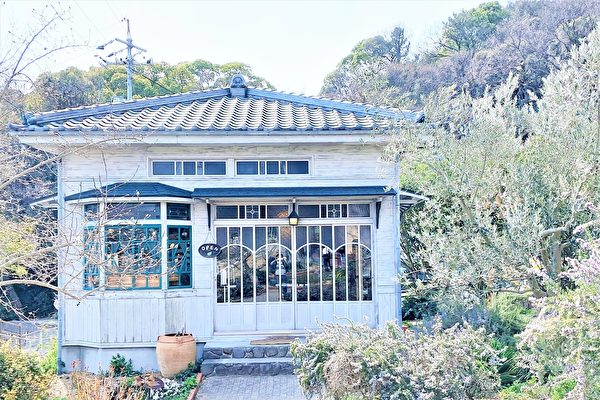Shikoku is the second largest island in the Seto Inland Sea of Japan, second only to Awaji Island. Due to its rich tourism resources, it has always been a popular tourist destination. Whether it’s the lovers’ sanctuary “Angel Road,” the stunning maple scenery of “Kankakei Gorge,” the filming location of “Kiki’s Delivery Service” at the “Olive Park,” or the many other beautiful sights, they all captivate visitors and make them want to linger.
Today, we venture on a cycling journey along the southern coast of Shikoku, from the western Toshima port to the eastern Marukin Soy Sauce Museum in just one day. Let’s embark on this journey now!
Since our itinerary allows only a day on Shikoku, we have to temporarily skip the central mountainous area, including three popular spots: the breathtaking “Senmai Rice Terraces” with about 800 interconnected small rice fields, recognized as one of Japan’s top terraced fields; the “Choshikei Monkey Park” cultivating monkeys known for their gentle nature and interaction with humans; and the picturesque “Kankakei Gorge” with its poetic beauty of crimson maple leaves, best observed in autumn when the valley is adorned with vibrant red foliage – we’ll save these for our next visit.
From Takamatsu Port, several ferries operate daily to and from Toshima port, the most frequently used port on Shikoku. Upon arrival, you’ll be greeted by the “Golden Crown,” aptly named “Gift of the Sun,” symbolizing the warm welcome to all esteemed guests visiting Shikoku.
Near Toshima port, there are two notable attractions. One is the “Teshima Strait,” a narrow passage as narrow as 9.93 meters at its tightest point, listed in the Guinness World Records in 1996 as the world’s narrowest strait, stretching 2.25 kilometers. Crossing the strait is the Eitai Bridge, a few steps away, leading to the opposite side easily.
Another popular spot is the seaside “Angel Road,” also known as the “Angel’s Promenade.” Accessible only during low tide when sandbars emerge from the sea, this romantic path of ebb and flow is considered a “lovers’ sanctuary” where wishes come true. Climbing up is the “Promise Hill,” offering a panoramic view of the entire Angel Road; here, visitors can ring the Bell of Happiness to add blessings to their love life.
The animated film “Kiki’s Delivery Service” by Hayao Miyazaki has propelled the Olive Park to super stardom, attracting a surge of visitors. This park is where 13-year-old witch Kiki travels with her mother’s broom and black cat, Jiji, using the unique ability to fly on a broomstick for express delivery tasks. The live-action film adaptation of “Kiki’s Delivery Service” was filmed at the Olive Park.
The bakery and windmill where Kiki resides have become popular spots for photo opportunities. Visitors can borrow broomsticks for some fun and exhilarating rides, hopping around joyfully. With its numerous European-style cottages, the Olive Park immerses visitors in the world of the “Kiki’s Delivery Service” animation, evoking the pure and quaint daily life of young Kiki.
As the name suggests, “Olive Park” is adorned with olive trees. This small hill alone hosts over two thousand olive trees, while Shikoku as a whole boasts about 30,000 olive trees. In the 16th century, Portuguese missionaries introduced olives to Japan, where olive oil was initially known as “Portuguese Oil.” However, due to the isolationist policies during the Edo period, olive trees were not widely cultivated until 1908 (Meiji 41) when the Nishimura Village in Shodo District (Uchinomi area of Shodoshima Town) began experimental olive cultivation, marking the origin of olives on Shikoku.
The Olive Memorial Hall not only showcases the history of olives but also highlights the powerful nutritional benefits of olive oil. For instance, Vitamin E protects and enhances skin radiance, antioxidant fatty acids help prevent tumors, and oleic acid, Vitamin E, and polyphenols act as high-quality antioxidants, aiding in the prevention of arteriosclerosis, promoting blood circulation, and offering various health benefits. Olive-related products are among Shikoku’s renowned specialties.
With over a thousand wooden barrels for soy sauce production, Shikoku produces a variety of delicious soy sauces using different fermentation processes. As we leisurely cycle through the southern coastal route, we pass by “Kinryu Soy Sauce” and “Marukin Soy Sauce,” two renowned breweries. Marukin Soy Sauce offers guided tours and a souvenir shop featuring various soy sauce flavors and soy sauce beans, including the exclusive soy sauce ice cream – a delightful treat combining the sweet and smooth texture of milk ice cream with the rich aroma of soy sauce, truly a unique flavor experience.
Established in 1907, Marukin remains a well-known brewery for over a century. Its soy sauce warehouse was designated as a tangible cultural property of Japan in 1996. Visitors can pay to explore the Marukin Memorial Hall, where various soy sauce brewing techniques and histories are showcased, offering a glimpse into the large-scale soy sauce pressing machines – truly an eye-opening experience!
Shikoku, with its stunning mountainous and coastal scenery, offers a perfect setting for our electric bike tour along the southern coast. With the azure ocean as our companion, cycling and feeling the sea breeze, we find relaxation and comfort in our journey. Admiring the scenic beauty of Seto Inland Sea, we stop along the way, cherishing every breathtaking view and collecting the “Three Treasures of Shikoku”: olives, soy sauce, and somen noodles, perfect for personal use or as gifts.
Looking forward to our next exploration of the central mountainous area of Shikoku, where we’ll introduce the delicious, fun, and beautiful aspects to everyone.

